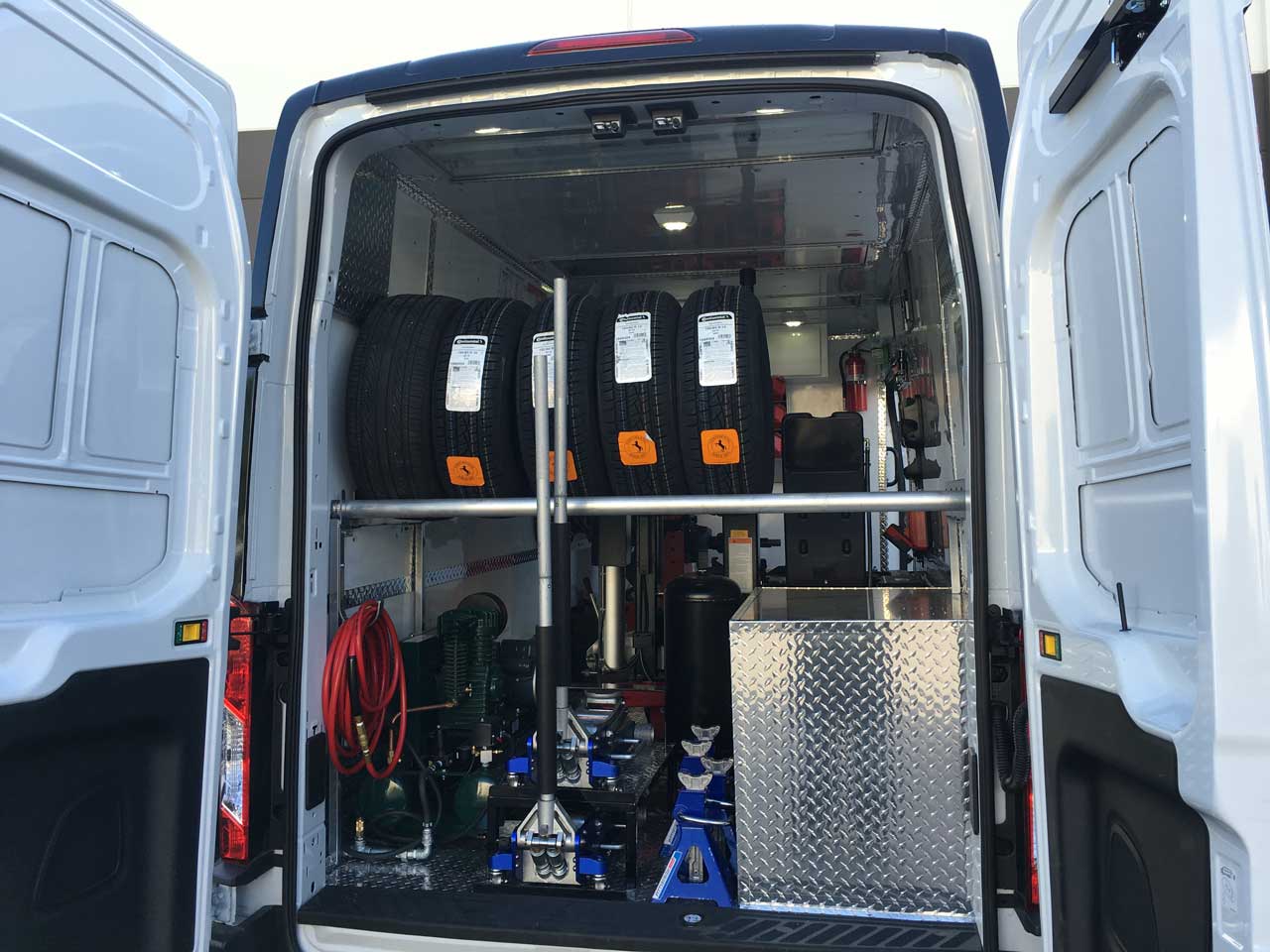Tire Solution: Proven Methods for Optimal Tire Maintenance and Treatment
From making certain correct tire stress to regular rotation and positioning, there are tried and tested approaches that can substantially expand the life-span of your tires and enhance total driving experience. Allow's dive into the world of tire service and uncover the tricks to keeping your tires in excellent form for the lengthy haul - Mobile Tire Service Las Vegas.
Relevance of Tire Stress
Proper tire pressure is a vital consider making sure optimal car performance and safety on the road. Keeping the recommended tire pressure degrees given by the producer offers numerous benefits. First of all, appropriate tire pressure promotes far better gas performance, as under-inflated tires can cause boosted rolling resistance, creating the engine to work harder and eat even more gas. Correct tire pressure ensures also walk wear, enhancing tire longevity and saving cash in the long run by delaying the requirement for premature replacements. In addition, properly blew up tires add to improved handling and stopping capabilities, critical for risk-free driving in various road problems. Over-inflated tires, on the other hand, can cause minimized traction and a harsher adventure. On the other hand, under-inflated tires are prone to getting too hot, which can cause blowouts and mishaps. Consistently inspecting and adjusting tire stress, particularly eventually journeys, is a straightforward yet efficient means to improve lorry efficiency, expand tire lifespan, and focus on safety when driving.
Tire Turning Standards
When considering tire rotation guidelines, it is necessary to recognize the relevance of this upkeep job in maximizing tire lifespan and maintaining optimal vehicle performance. Tire turning entails changing the position of each tire on a vehicle to ensure also step wear. Front tires have a tendency to use faster than rear tires due to steering pressures, making normal rotation important for balanced wear patterns. The recommended turning pattern differs relying on whether an automobile is front-wheel, rear-wheel, all-wheel, or 4x4. Normally, tires must be revolved every 5,000 to 7,500 miles, or as encouraged in the car manual. Neglecting tire rotation can cause unequal wear, affecting handling, grip, and potentially compromising lorry home safety. By sticking to appropriate rotation standards, drivers can extend the life of their tires, boost fuel efficiency, and boost overall driving experience. Regular turning is an easy yet effective upkeep practice that contributes significantly to tire durability and vehicle efficiency.

Benefits of Wheel Placement
Guaranteeing correct wheel positioning after tire rotation is important for preserving balanced wear patterns and optimizing vehicle efficiency. In addition, right wheel positioning helps to prolong the life expectancy of your tires. Misaligned wheels can cause uneven tire wear, leading to premature tire replacement and raised upkeep costs.

Tire Tread Depth Inspect
Executing a normal evaluation Get More Information of tire step deepness is necessary for preserving safe driving problems and prolonging the life-span of your tires. Irregular step wear can suggest issues with tire alignment, stress, or suspension, highlighting the importance of normal tread deepness checks. By incorporating tire step deepness checks into your regular maintenance routine, you can drive with self-confidence understanding that your tires are in leading problem.
Seasonal Tire Assessment
Seasonal tire inspection is a fundamental facet of tire upkeep that makes sure tires are prepared to encounter the challenges postured by various weather condition conditions. In preparation for winter months, it is crucial to inspect the tire stress consistently as chilly temperatures can cause tire pressure to drop. By conducting regular seasonal tire assessments, chauffeurs can prolong tire life-span, improve fuel effectiveness, and most importantly, make sure a protected driving experience in differing weather condition conditions.
Final Thought
Finally, maintaining proper tire stress, turning tires regularly, aligning wheels properly, reference checking step depth, and performing seasonal examinations are important techniques for optimum tire care. By adhering to these verified approaches, drivers can guarantee their tires last longer, execute better, and add to general car safety. It is very important to prioritize tire maintenance to prevent mishaps, improve gas performance, and lengthen the life-span of tires.
Adequate tire pressure advertises far better fuel performance, as under-inflated tires can lead to raised rolling resistance, triggering the engine to work more difficult and consume even more fuel.When thinking about tire rotation standards, it is crucial to recognize the relevance of this maintenance job in maximizing tire life expectancy and keeping optimal lorry performance. Seasonal tire examination is a basic element of tire maintenance that ensures tires are all set to deal with the challenges presented by different climate conditions. By performing routine seasonal tire examinations, chauffeurs can lengthen tire life-span, improve fuel effectiveness, and most importantly, make sure a protected driving experience in varying weather conditions.
In final thought, keeping proper tire stress, revolving tires frequently, lining up wheels appropriately, monitoring walk deepness, and performing seasonal examinations are vital methods for optimum tire treatment.